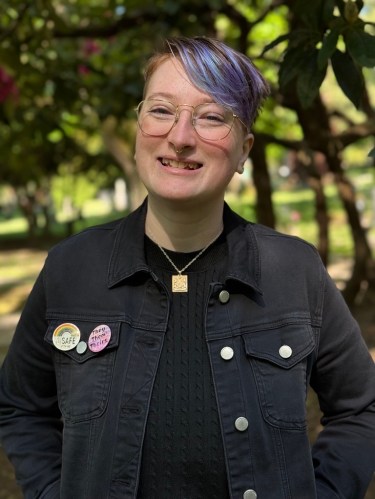Eye movement desensitization and reprocessing (EMDR) is a therapeutic modality that integrates elements of exposure therapy, traditional talk therapy, and bilateral eye movement, as the individual follows and tracks the therapist’s fingers from right to left as they are invited to remember a memory associated with a trauma. The goal of EMDR therapy is to help individuals process past experiences and traumatic memories, integrating the associated sensations and psychosomatic symptoms as means of healing (Shapiro, 2014; Vereecken & Corso, 2024). “Over 300 studies and several meta-analyses have shown “higher or similar efficacy in PTSD compared to pharmacological or other psychological interventions” (Landin-Romero, 2018). The National Institute for Health and Clinical Excellence and the World Health Organization have recognized EMDR as a gold standard in the treatment of post-traumatic stress disorder (Born et al., 2013; Landin-Romero, 2018).
The Adaptive Information Processing (AIP) model, at the foundation of EMDR therapy, supports that “current experiences link into already established memory networks and can trigger the unprocessed emotions, physical sensations, and beliefs” belonging to traumatic or adverse life experiences, resulting in stressors triggering past memories stored in the body, causing dysregulation in the present. Bilateral eye movements activate “parasympathetic activation, resulting in physiologic calming” (Shapiro, 2014).
There is growing empirical evidence (Vereecken, 2024) that EMDR is a highly effective modality for the treatment of PTSD and trauma in diverse populations, such as clients of color, veterans, asylum-seeking migrants, and LGBTQ+-identifying individuals. EMDR can be applied in therapy for children, teens, and adults, and has been observed to support positive outcomes after short-term durations of EMDR treatment (Bannink Mbazzi et al., 2021; Shapiro 2014; Vereecken & Corso, 2024).
There was one study in which counseling interns offered an adaptation of EMDR called The Flash Technique (Yznaga et al., 2025) with migrants at the U.S.-Mexico border seeking asylum in the United States. The Flash Technique, a “low-intensity intervention,” or a treatment that is designed for settings which offer limited time for therapy, is a technique to help regulate the client’s nervous system so that the EMDR treatment could be more accessible and effective. Firsy developed by Manfield et al. (2017) Flash Technique, decreases in levels of distress for the client can result in as little as 15 to 20 minutes (Wong, 2021).
First, the therapist invites the client to identify a distressful memory and is invited to remember, however not dwell on it. Later, the client is directed to direct their attention to a “positive engaging focus” (PEF), “something neutral such as slow breathing and body scan, or something positive such as a happy memory or an engaging conversation between the client and the therapist, e.g., discussing a hobby” (Yznaga et al., 2025). The therapist then prompts the client to blink their eyes 3 times, and loosely recall the memory, as if seeing it from a distance. “Over time, the vividness of the memory/image may degrade, and the memory would become less disturbing to the client” (Manfield et al.).
Dr. Jenay Garrett speaks to the importance of approaching EMDR with an anti-racist lens and through integrating practices belonging to cultural humility and trauma-informed care, such as building upon clients’ strengths, celebrating their intersecting identities, and acknowledging power differentials between the client and therapist. Dr. Garrett offers guidance for how to integrate culturally humble practices with EMDR therapy, as she posits that EMDR therapy can lose impact without the client’s “collective, historical, and cultural experiences” being woven into the process in the first phase of treatment. (Garrett, 2025).
EMDR is a therapeutic modality which can be adapted to a wide range of cultural groups and populations (Bannink Mbazzi et al., 2021; Garrett, 2025; Shapiro, 2014; Vereecken & Corso, 2024). The bilateral eye movements, also known as saccadic eye movements [EMs], as our eyes do when we take a walk, send signals to the brain, activating the parasympathetic nervous system, increasing a calming effect as a result (Landin-Romero et al., 2018). EMDR is practical and effective and has been proven to reduce the distressing somatic and mental health symptoms resulting from traumatic experiences. Though discovered and developed in 1989, EMDR is experiencing a growth in interest as a short-term, evidence-based treatment for the healing of trauma in diverse communities.
Sources
Bannink Mbazzi, F.B., Dewailly, A., Admasu, K., Yvonne Duagani, Y., Wamala, K., Vera, A., Bwesigye, D., Roth, G. (2021). Cultural Adaptations of the Standard EMDR Protocol in Five African Countries. J EMDR Pract and Res.15:29-43. DOI:10.1891/EMDR-D-20-00028
Manfield, P., Lovett, J., Engel, L., Manfield, D. (2017). Use of the Flash Technique in MDR therapy: Four case examples. J EMDR Prac Res.11(4):195–205.
Born J., Rasch B., Gais S. (2013). Guidelines for the Management of Conditions Specifically Related to Stress. Geneva: World Health Organization.
Garrett, J.G. (2025, July 25). Using EMDR with BIPOC Clients: Six Strategies for Children, Adolescents, and Adults. https://www.emdria.org/blog/using-emdr-with-bipoc-clients-six-strategies-for-children-adolescents-and-adults
Landin-Romero, R., Moreno-Alcazar, A., Pagani, M., Amann, B.L. (2018). How Does Eye Movement Desensitization and Reprocessing Therapy Work? A Systematic Review on Suggested Mechanisms of Action. Front Psychol. Aug 13;9:1395. doi: 10.3389/fpsyg.2018.01395. PMID: 30166975; PMCID: PMC6106867.
Manfield, P., Lovett, J., Engel, L., Manfield, D. (2017). Use of the Flash Technique in MDR therapy: Four case examples. J EMDR Prac Res. 11(4):195–205.
Shapiro F. (2014). The role of eye movement desensitization and reprocessing (EMDR) therapy in medicine: addressing the psychological and physical symptoms stemming from adverse life experiences. Perm J. Winter;18(1):71-7. doi: 10.7812/TPP/13-098. PMID: 24626074; PMCID: PMC3951033.
Vereecken, S. & Corso, G. (2024). Revisiting Eye Movement Desensitization and Reprocessing Therapy for Post-traumatic stress disorder: A Systematic Review and Discussion of the American Psychological Association’s 2017 Recommendations. Cureus. Apr 22;16(4):e58767. doi: 10.7759/cureus.58767. PMID: 38779227; PMCID: PMC11111257.
Wong, S.L. (2021). A model for the Flash Technique based on working memory and neuroscience research. J EMDR Prac Res. 2021;15(3):123–135. https://doi.org/10.1891/EMDR-D-20-00048.
Yznaga, S., Wong, S.L., Maniss, S. (2025). The Flash Technique as an Effective Low-Intensity Intervention for Migrants at the U.S. Point of Entry. J EMDR Pract and Res.19:0009.DOI:10.34133/jemdr.0009







